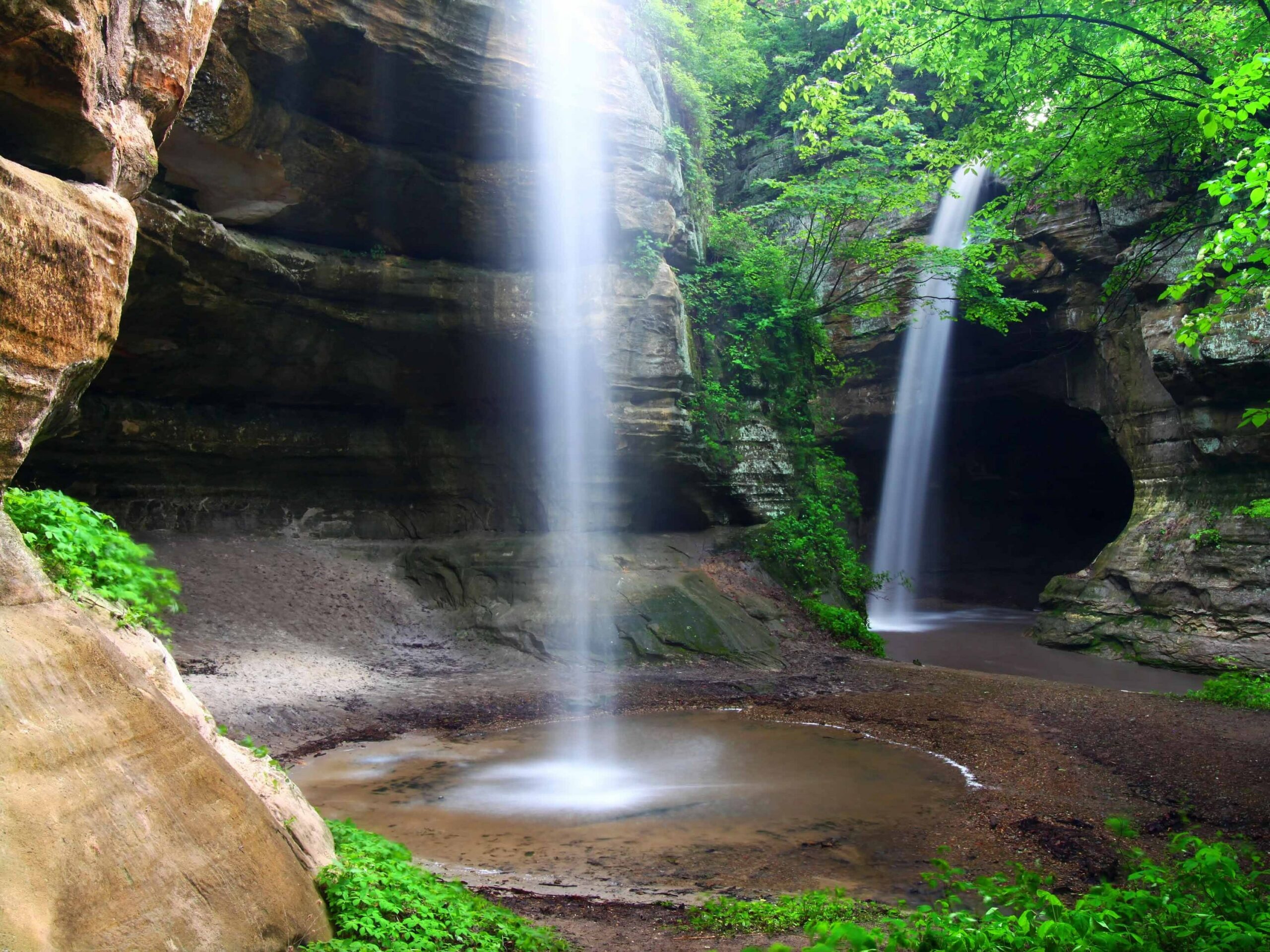Where to go hiking near me? This question, pondered by countless outdoor enthusiasts, leads us on a journey into the digital landscape of trail discovery. Finding the perfect hike involves more than just proximity; it’s about matching individual preferences – be it a challenging ascent, a leisurely stroll, or a breathtaking vista – with the available trails. This exploration delves into the technological solutions that connect hikers with their ideal outdoor adventures, from sophisticated search algorithms to user-friendly interfaces that prioritize personal preferences and provide comprehensive trail information.
This process involves leveraging various data sources, including popular hiking apps and local park websites, to create a robust and accurate database of trails. Careful consideration is given to data standardization, handling inconsistencies, and designing efficient search algorithms that filter results based on factors such as difficulty, distance, elevation gain, and scenery type. The ultimate goal is to present a clear, visually appealing, and informative overview of nearby hiking options, empowering users to make informed decisions and embark on safe and enjoyable hikes.
Understanding User Location & Preferences
Accurately determining a user’s location and preferences is crucial for providing relevant hiking trail recommendations. This involves employing various methods to gather location data and understanding the diverse factors influencing a hiker’s choices. The system must then intelligently process this information to deliver personalized and satisfying results.
User Location Determination Methods
Several methods can be used to ascertain a user’s location. The accuracy and user experience associated with each method vary. Choosing the right approach often involves balancing accuracy with user privacy concerns and ease of implementation.
- IP Address Geolocation: This method uses the user’s IP address to approximate their location. While convenient, it often provides only a general area (city or region) and is not precise enough for pinpointing specific trailheads. Accuracy can be significantly impacted by factors such as VPN usage and dynamic IP assignment.
- GPS Location Services: This approach offers superior accuracy by leveraging the user’s device’s GPS capabilities. It can pinpoint the user’s precise location, allowing for more targeted trail recommendations. However, it requires user consent and may be affected by signal strength and environmental factors that obstruct GPS signals.
- Manual Location Input: Users can manually enter their location via a search bar or by selecting a location from a map. This method provides flexibility but relies on the user’s accurate input and might be less convenient than automatic location detection.
User Preference Categories
Understanding user preferences is equally important in delivering personalized results. Categorizing preferences allows for efficient filtering and prioritization of search results. A robust system will accommodate a range of preferences to cater to diverse hiking styles and abilities.
- Difficulty Level: This category encompasses various levels, such as beginner, intermediate, and advanced, reflecting the trail’s terrain, elevation gain, and overall physical demands. Users can select a difficulty level that matches their fitness level and experience.
- Trail Length: This allows users to filter trails based on their desired hiking duration. Options could range from short, easy walks to multi-day backpacking adventures. Users can specify a minimum and maximum distance preference.
- Scenery Type: This category enables users to filter trails based on the type of landscape they prefer, such as mountains, forests, deserts, coastlines, or lakes. Multiple scenery types can be selected to broaden or narrow the search.
User Interface Design for Data Collection
A user-friendly interface is crucial for effectively collecting location and preference data. The design should be intuitive and minimize the number of steps required for users to provide the necessary information.
A possible interface design might include a map for location input (with options for manual entry or GPS location), a series of drop-down menus or sliders for selecting difficulty level and trail length, and checkboxes or a selection list for choosing preferred scenery types. Clear labels and concise descriptions will enhance user understanding. The design should prioritize ease of use and visual clarity.
Search Result Prioritization System
Once user location and preferences are collected, a system is needed to prioritize search results based on relevance. This can be achieved using a weighted scoring system, where each preference category is assigned a weight based on its importance.
For example, a user searching for a beginner-level trail within a 5-mile radius of their location, preferring forest scenery, might have a higher score for trails matching these criteria exactly, compared to trails that only partially meet the preferences. The system should consider proximity, difficulty level match, trail length match, and scenery type match in determining the final ranking of search results. The weights assigned to each category could be adjusted based on user feedback and usage patterns.
Local Hiking Trail Databases
Finding and utilizing local hiking trail databases is crucial for planning successful hikes. These databases offer a wealth of information, ranging from trail difficulty and length to elevation gain and user reviews, all vital for making informed decisions about your hiking adventures. Effective use involves understanding how to access, process, and organize this data from various sources.
Accessing and processing data from sources like AllTrails and local park websites typically involves navigating their user interfaces. AllTrails, for example, allows filtering by distance, elevation gain, difficulty, and location. Local park websites often provide downloadable trail maps (often as PDFs) and descriptions, sometimes including GPS coordinates. Processing this data might involve manually copying information into a spreadsheet or, for more advanced users, employing web scraping techniques to automate data extraction. Remember to always respect the terms of service of each website when accessing and using their data.
Data Standardization Methods
Standardizing data from disparate sources is essential for efficient analysis and comparison. A common approach is to create a standardized data schema. This schema defines a consistent set of fields for each trail, such as trail name, length, elevation gain, difficulty rating (using a standardized scale, perhaps 1-5), and location coordinates (using a consistent format like latitude and longitude). Data from different sources can then be mapped to this schema. For example, if one source uses a textual difficulty rating (“easy,” “moderate,” “hard”), a conversion to a numerical scale (e.g., “easy”=1, “moderate”=2, “hard”=3) needs to be implemented. Inconsistencies in units (e.g., kilometers vs. miles) also need to be addressed through conversion.
Handling Incomplete or Inconsistent Data
Incomplete or inconsistent data is a common challenge. Strategies for handling this include: identifying missing data points and either filling them with estimated values (if reasonable) or flagging them as missing. For inconsistent data, manual review and correction might be necessary. For example, if elevation gain is reported inconsistently (sometimes in feet, sometimes in meters), the data needs to be converted to a uniform unit. Statistical methods, such as calculating the mean or median for similar trails, can help fill in missing values, but this should be done cautiously and only when justifiable.
Data Structure for Efficient Search and Retrieval
Organizing data for efficient search and retrieval often involves using a database management system (DBMS) like SQLite or a spreadsheet program with advanced filtering capabilities. A relational database would allow for efficient querying based on various criteria (e.g., finding all trails within a specific distance, with a specific difficulty level, and below a certain elevation gain). A well-structured database would include tables for trails (with fields like trail name, length, difficulty, etc.) and possibly additional tables for user reviews or photos, linked to the trail data. This structured approach allows for fast and flexible searches and analysis. Using a spreadsheet, one might use filters and sorting to achieve similar results, but the scalability is limited compared to a database.
Search Algorithm & Filtering
Matching user preferences with suitable hiking trails requires a robust search algorithm and effective filtering mechanisms. This involves considering geographical location, desired trail characteristics, and user-specified preferences to provide a relevant and personalized search experience.
The core of the system lies in efficiently processing user input and comparing it against a database of hiking trails. This necessitates a well-defined search algorithm capable of handling various search criteria and a filtering system that allows users to refine their search results based on specific parameters.
Algorithm Design
A suitable approach involves a two-stage process: initial spatial filtering followed by attribute-based filtering. First, the system uses the user’s location to identify trails within a specified radius. This significantly reduces the search space. Then, attribute-based filtering refines the results further based on criteria like difficulty, length, elevation gain, and scenery type. This can be implemented using a combination of keyword matching and numerical range comparisons. For example, a user searching for “easy trails under 5 miles” would trigger a filter that selects trails classified as “easy” and with lengths less than 5 miles. The final results are presented in order of relevance, potentially incorporating factors like user ratings or trail popularity.
Filtering Mechanisms
Trail difficulty can be represented using a categorical system (e.g., easy, moderate, difficult, strenuous), allowing users to select their desired level. Trail length and elevation gain are numerical values that allow for range-based filtering (e.g., trails between 3 and 7 miles with less than 1000 feet of elevation gain). Scenery preferences can be handled using keywords associated with each trail (e.g., “forest,” “mountain views,” “lake,” “desert”). These keywords allow for Boolean searches (e.g., trails with “forest” AND “lake”). The system can also incorporate advanced filtering options, such as filtering by trail type (loop, out-and-back), permitted activities (hiking, biking, horseback riding), and accessibility features.
Algorithm Comparison
Several algorithms could be employed. A simple linear scan of the database is feasible for smaller datasets but becomes inefficient with larger ones. Spatial indexing techniques, such as R-trees or quadtrees, significantly improve efficiency by organizing trails spatially, enabling faster retrieval of trails within a given radius. For attribute-based filtering, efficient data structures like inverted indexes can be used to quickly find trails matching specific keywords or numerical ranges. The choice of algorithm depends on the size of the database and the expected search frequency. A hybrid approach combining spatial and attribute-based indexing is often the most effective.
Handling No Results
If no trails match the user’s criteria, the system should provide informative feedback, suggesting alternative search options. This might include broadening the search radius, relaxing filtering criteria (e.g., allowing a wider range of difficulty levels), or suggesting similar trails that partially match the user’s preferences. The system could also recommend nearby locations with more hiking opportunities. For instance, if a user searches for “easy trails near me” and no results are found within a 10-mile radius, the system might suggest expanding the search to a 20-mile radius or searching for “moderate trails near me.”
Presenting Search Results
Presenting search results in a user-friendly and visually appealing manner is crucial for a successful hiking app. A well-designed interface encourages exploration and helps users quickly find trails that match their preferences. The following details the approach to presenting the search results to the user.
Trail Search Results Table
Search results will be displayed in a responsive HTML table, adapting seamlessly to various screen sizes. The table will feature four columns: Trail Name, Distance, Difficulty, and Estimated Time. The Trail Name column will link directly to the trail’s detail page. Distance will be presented in miles or kilometers, depending on user preferences. Difficulty will use a standardized rating system (e.g., Easy, Moderate, Hard), possibly with a visual indicator like colored circles (green for easy, yellow for moderate, red for hard). Estimated time will provide a reasonable estimate for completing the hike, accounting for factors like elevation gain and trail length. For example, a result might show: “Eagle Peak Trail, 5.2 miles, Moderate, 3-4 hours”.
Trail Map Visualization
Effective visual representation of trail maps is essential for users to understand the trail’s layout and features. The map will use a clear and concise style, showing the trail path as a distinct line, overlaid on a topographic base map. Key map elements will include: a clear legend explaining symbols used (e.g., different line styles for different trail types, icons for points of interest like viewpoints or water sources), elevation profile along the trail path, possibly displayed as a separate graph, shaded relief to highlight elevation changes, and markers for trailheads and key points of interest along the route. For instance, a steep incline might be visually represented by a sharply rising line on the elevation profile.
User Reviews and Ratings
User reviews and ratings play a vital role in informing users about trail conditions and overall experience. Each trail listing will display an aggregated star rating (e.g., 4.5 out of 5 stars), based on user reviews. A summary of recent reviews (perhaps the three most recent) will be shown, allowing users to quickly get a sense of the trail’s condition and popularity. For example, a review snippet might say, “Great views! A little muddy in sections after the recent rain.” The ability to sort results by rating would also be included.
Trail Photo Display
High-quality photos significantly enhance the user experience. The trail listing will include a gallery of 3-5 photos, showcasing various aspects of the trail. Photos will be of high resolution, accurately representing the trail’s scenery, features, and conditions. Photos will be carefully selected to include a diverse representation, such as wide shots of scenic vistas, close-ups of interesting flora or fauna, and pictures illustrating the trail’s condition (e.g., rocky terrain, well-maintained path). For example, one photo might showcase a panoramic view from a summit, another might show a close-up of a unique rock formation, and another might depict a section of the trail showcasing its overall condition.
Additional Trail Information
Providing comprehensive trail information is crucial for a positive and safe user experience. Users need more than just a trail name and location; they require detailed descriptions, safety guidelines, and practical logistical information to plan their hikes effectively. This section outlines methods for delivering this vital supplementary data.
Detailed Trail Descriptions
Detailed trail descriptions should go beyond basic length and difficulty. They should include a narrative description of the trail itself, highlighting notable features, viewpoints, and points of interest along the way. For instance, a description might mention a scenic overlook with panoramic views, a historical landmark, or a particularly challenging rock scramble. Elevation profiles, visually represented as charts or graphs, are highly beneficial in giving hikers an understanding of the terrain’s challenges. These profiles should clearly show elevation changes, steep ascents, and descents, allowing users to assess the physical demands of the trail before embarking on their hike. Furthermore, incorporating high-quality photographs of key locations along the trail significantly enhances the user’s understanding and anticipation of the experience. Imagine a picture depicting a cascading waterfall or a lush forest canopy. Such visuals paint a much clearer picture than text alone.
Safety Information and Emergency Contact Details
Safety information is paramount. This should include information about potential hazards such as steep drop-offs, river crossings, wildlife encounters, or challenging terrain. Providing clear instructions on what to do in case of an emergency is essential. This should include specific emergency contact numbers for local rescue services, park rangers, or relevant authorities. A clear explanation of how to use a personal locator beacon (PLB) or satellite messenger, if recommended for the trail, should also be included. For instance, instructions might specify how to activate the device and provide the relevant contact information for emergency response. The inclusion of a map highlighting emergency shelters or designated safe zones along the trail can further improve safety planning.
Directions and Transportation Options to Trailheads
Clear and concise directions to trailheads are essential. These directions should be provided using multiple formats, including text-based directions, map links, and potentially even turn-by-turn navigation instructions integrated with popular mapping applications. Information on parking availability at the trailhead should also be included, specifying if parking fees apply and whether there are any restrictions on parking times or vehicle types. If public transportation is an option, details about bus routes, train schedules, or other relevant transit information should be provided, along with estimated travel times from major population centers. For example, directions might include the following: “From Highway 101, take exit 23 and turn right onto Redwood Drive. Follow Redwood Drive for 2 miles until you reach the trailhead parking area on the left.”
Real-Time Trail Conditions
Providing real-time trail conditions significantly improves the hiker’s experience and safety. This information can be obtained through various sources, including weather forecasts, social media monitoring of recent hiker reports, and direct partnerships with park authorities or trail maintenance organizations. Integrating live weather data, including current temperature, precipitation, and wind conditions, allows hikers to make informed decisions about whether to proceed with their hike. Furthermore, reporting systems for trail closures, due to weather events, maintenance, or other unforeseen circumstances, are vital for preventing accidents and wasted trips. For example, a system could display a notice such as: “Trail currently closed due to recent landslides. Expected reopening date: October 27th.” This real-time information should be prominently displayed, possibly with a color-coded system (green for open, yellow for caution, red for closed) to easily convey the current status.
User Interaction and Feedback
Effective user interaction and feedback mechanisms are crucial for improving the accuracy and usefulness of any hiking trail search application. A well-designed system allows users to contribute valuable information, report issues, and ultimately shape the application’s future development. This section details the design of such a system, focusing on feedback collection, reporting mechanisms, and the integration of user input.
User feedback collection and reporting mechanisms are essential for maintaining the accuracy and relevance of the hiking trail data. The system should facilitate easy and efficient communication between users and developers.
Feedback Collection Methods
The application should offer multiple avenues for users to provide feedback. A prominent “Report Issue” button on each trail page allows users to quickly flag problems. This button could link to a form requesting specific details such as the type of issue (trail closure, inaccurate information, dangerous conditions), location specifics, and a description. Additionally, a general feedback form, accessible through the application’s settings or a dedicated page, allows users to express broader opinions or suggestions regarding the app’s functionality and design. Finally, a rating system (e.g., star ratings) on each trail page allows for quick feedback on overall trail quality and experience. This provides a simple, immediate way for users to rate trails based on their personal experience.
Trail Condition Reporting
Users should be able to report changes in trail conditions in real-time. The reporting form mentioned above should include options for specifying trail conditions such as muddiness, snow accumulation, trail damage, or hazards. The system could also include a mechanism for users to upload photographs to illustrate their reports. For example, a picture of a fallen tree blocking a trail provides more concrete evidence than a textual description. A robust system will allow the moderation of user-submitted information to ensure quality control.
Incorporating User Feedback
User feedback should be systematically reviewed and analyzed to inform application updates. A dedicated team could be responsible for monitoring submitted reports and feedback. This team would categorize and prioritize issues based on their severity and frequency. For example, reports of a dangerous cliff collapse would take precedence over reports of minor trail erosion. This feedback could then be used to correct inaccuracies in trail descriptions, update trail conditions, or add new features based on user requests. Regular updates to the application, incorporating user-suggested improvements and corrections, will demonstrate responsiveness to user needs and enhance user satisfaction.
User Query Handling and Support
A comprehensive FAQ section addressing common user queries should be readily available within the application. For more complex issues, a contact form or email address should be provided. Response time to user queries should be a key performance indicator (KPI) for the support team, aiming for prompt and helpful resolutions. For example, a user reporting an inaccurate elevation gain should receive a timely response acknowledging their report and outlining the steps taken to address it. This proactive approach to user support builds trust and encourages continued engagement.
Final Thoughts
Ultimately, the quest to answer “Where to go hiking near me?” transcends a simple search query. It’s about connecting individuals with nature, fostering a sense of adventure, and providing the tools necessary for a safe and rewarding outdoor experience. By combining advanced technology with a user-centric approach, we can transform the process of finding the perfect hike into an engaging and empowering experience, encouraging more people to explore the beauty of the trails around them. The integration of user feedback, real-time trail conditions, and comprehensive trail information ensures that this digital resource evolves and adapts to the ever-changing needs of the hiking community.




